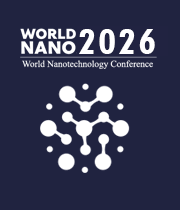Nanotechnology in Textiles
Nanotechnology in textiles is the use of nanotechnology and Nanobiotechnology in the design, development and manufacture of textiles. This technology has the potential to revolutionize the textile industry by providing improved performance and functionality in fabrics. Nanotechnology can be used to create textiles with enhanced properties such as increased strength, improved breathability, better color fastness, and improved water repellency. It can also be used to create fabrics with embedded sensors that can monitor and regulate temperature, humidity, and other environmental conditions, or to detect and respond to changes in the wearer’s body chemistry. Nanotechnology can also be used to create smarter, more efficient textiles that can respond to external stimuli and can be programmed for specific tasks. Nanotechnology is also being used to create textiles with advanced antimicrobial properties, and to incorporate Nanobiotechnology that can store and release energy. The potential applications of nanotechnology in textiles are virtually limitless, and its use is likely to become increasingly prevalent in the near future.

Harry E Ruda
University of Toronto, Canada
Raman Singh
Monash University, Australia
Paulo Cesar De Morais
Catholic University of Brasilia, Brazil
Xiao Hong Nancy Xu
Old Dominion University, United States
S V A R Sastry
Harcourt Butler Technical University, India
Vinayak Adimule
Angadi Institute of Technology and Management, India



Title : Circumventing challenges in developing CVD graphene on steels for extraordinary and durable corrosion resistance
Raman Singh, Monash University, Australia
Title : Nanomaterial-based bio-lubricant additives for improved efficiency and environmental sustainability in automotive applications
S V A R Sastry, Harcourt Butler Technical University, India
Title : Evaluating cytotoxicity of metal-doped tin oxide nanoparticles
Paulo Cesar De Morais, Catholic University of Brasilia, Brazil
Title : 40,000 implants in humans and no failure: The impact of nanomedicine
Thomas J Webster, Hebei University of Technology, China
Title : Enhanced photoluminescence and fluorescence properties of flake-like Co3O4@Cs2O bimetallic oxide nanostructures
Vinayak Adimule, Angadi Institute of Technology and Management, India
Title : Lipid nanoparticles formulations: From bench scale to industrial scale
Mohammad A Obeid, RAK Medical and Health Sciences University, United Arab Emirates